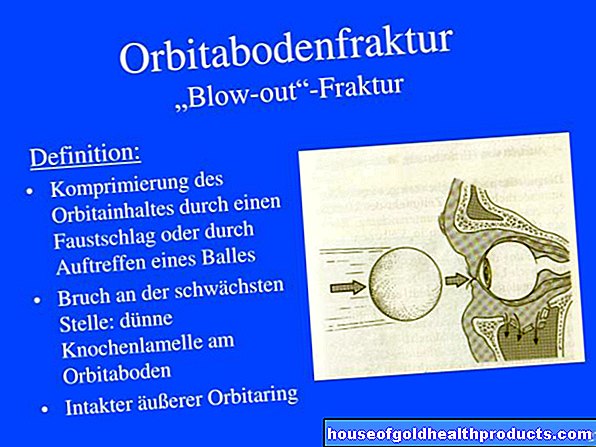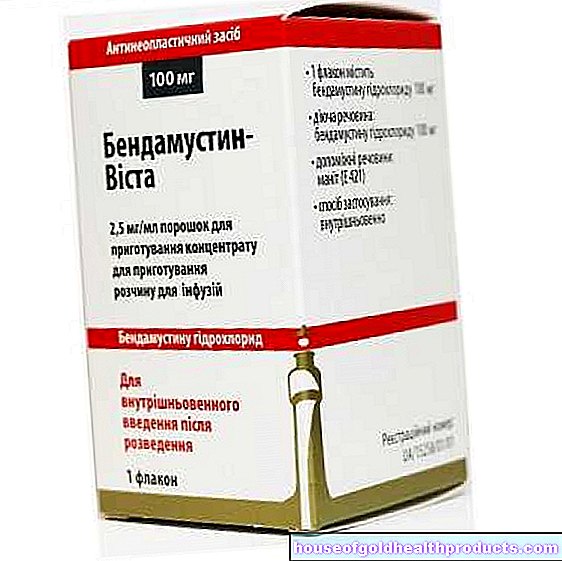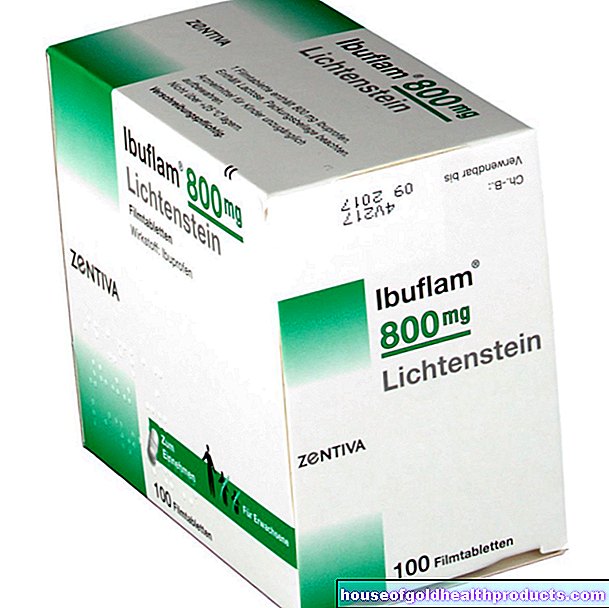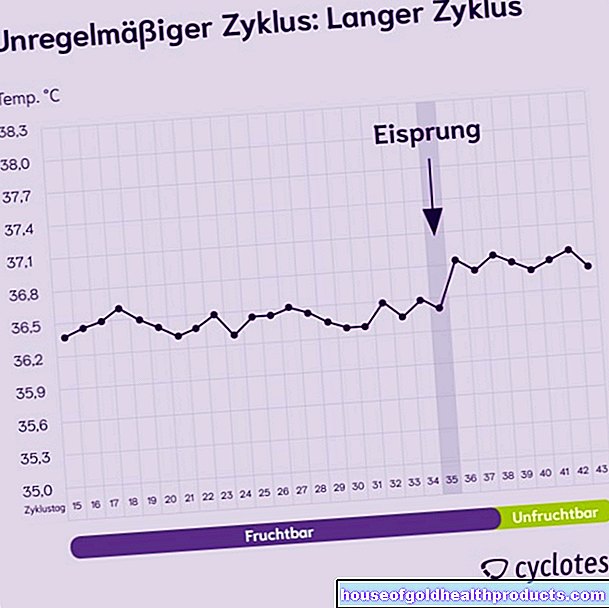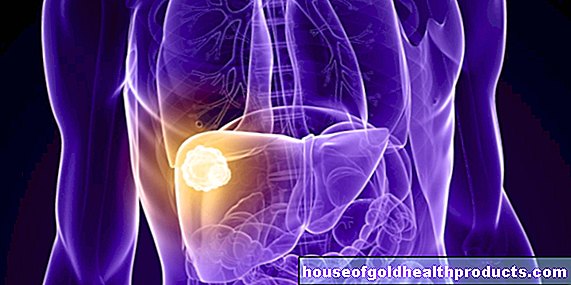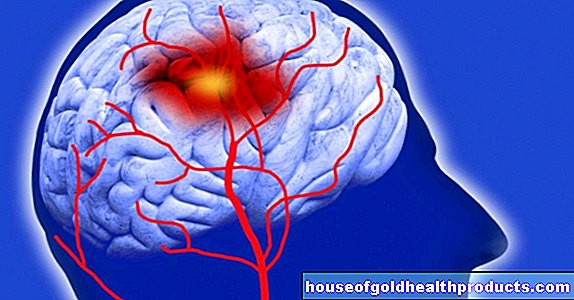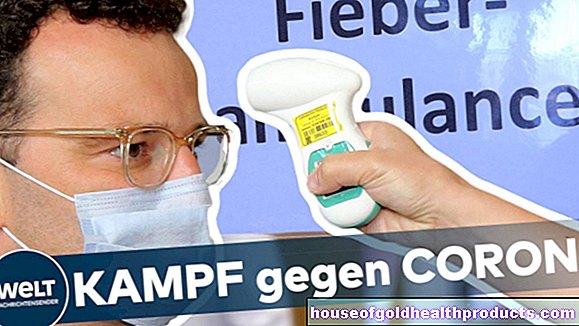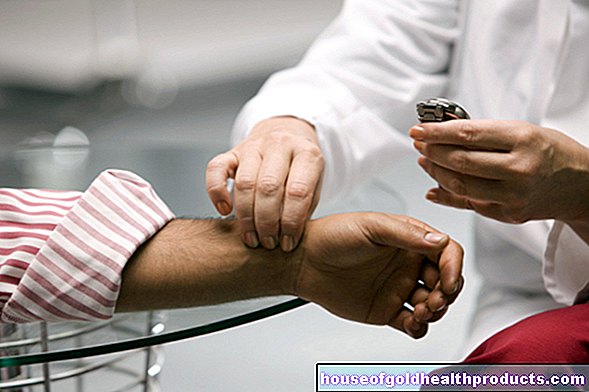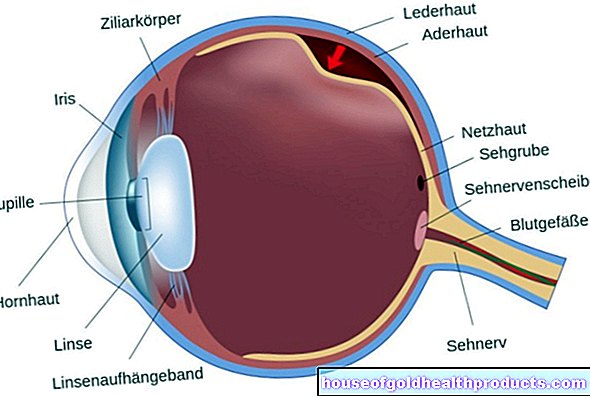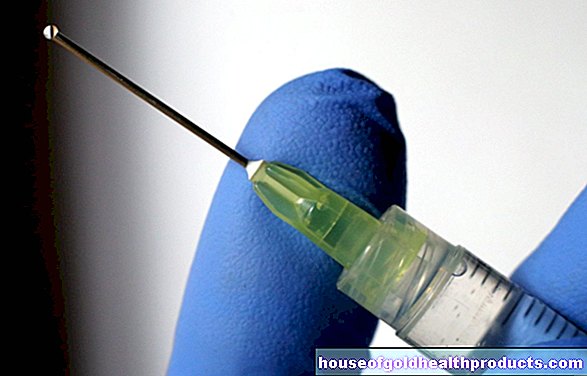Impingement Syndrome
Dr. med. Julia Schwarz is a freelance writer in the medical department.
More about the experts All content is checked by medical journalists.Impingement syndrome (bottleneck syndrome) describes painful entrapment of tendons or muscles within a joint. This can lead to painful restrictions on movement. The shoulder joint is most commonly affected by impingement syndrome, followed by the hip joint. Treatments include pain medication, physiotherapy, and surgery. Here you can read everything you need to know about impingement syndrome.
ICD codes for this disease: ICD codes are internationally recognized codes for medical diagnoses. They can be found, for example, in doctor's letters or on certificates of incapacity for work. M75M24
Impingement syndrome: description
Impingement syndrome (bottleneck syndrome) describes painful entrapment of tendons or joint capsule parts (soft tissues) within the joint space. As a result, the tendons can no longer slide freely in the joint space. In most cases, this leads to degenerative changes that are associated with limited mobility of the joint.
The impingement syndrome mostly manifests itself in the shoulder joint. This affects around ten percent of the German population (men and women around the age of 50 have about the same frequency). The impingement syndrome often also occurs in the hip joint. Less often, patients suffer from ankle impingement syndrome.
Two forms of impingement syndrome
Impingement syndrome can be divided into two forms, depending on which structures are being compressed:
The primary outlet impingement syndrome is based on a change in the bony structures, such as a bone spur or an overly sloping roof of the bone.
Secondary non-outlet impingement syndrome is the result of another disease or injury that narrows the joint space. These include, for example, inflammation of the bursitis and damage to tendons or muscles.
Impingement syndrome on the shoulder
You can read everything you need to know about congestion syndrome in the shoulder area in the article Impingement - Shoulder.
Impingement syndrome on the hip
You can read everything you need to know about bottleneck syndrome in the hip area in the article
Impingement - hip.
Impingement syndrome: symptoms
Impingement syndrome causes different symptoms depending on the affected joint. In general, the patients suffer from pain, which usually increases under stress and leads to a relieving posture.
Symptoms - shoulder joint
If the impingement syndrome occurs in the shoulder joint, the patients report in the early stages of an acute onset of pain that occurs discreetly at rest and intensifies under stress (especially when doing activities above the head). The patients can often state a triggering situation (stress, exposure to cold, injury). The pain is described as lying deep in the joint and often intensifies at night, so that lying on the affected side is hardly possible. Raising the arm to more than 60 degrees from the starting position (arm hangs loosely) is no longer possible for most patients. As the disease progresses, the bursa can stick together in the shoulder joint area (bursa subacromialis), which increases the painful restriction of movement. As a result of the pain-related reduction in muscle activity, the muscles shrink very easily and the joint loses stability.
Symptoms - hip joint
The impingement syndrome often shows a very gradual onset of symptoms in the hip joint. In the beginning, hip joint pain occurs only sporadically and is often described by the patient as groin pain. However, the pain increases with physical activity and then often radiates into the thigh. In most cases, they increase when the leg, angled by 90 degrees, is turned inwards (internal rotation with 90 degrees of flexion).
Impingement syndrome: causes and risk factors
Impingement syndrome can have various causes. These are divided into bony structural changes and damage to the soft tissues (muscles, tendons, bursa). The risk of impingement syndrome increases with age, although hip joint impingement syndrome can also develop in young athletes due to increased stress on the flexible joints. The joints are then less stable, and the heavy use can cause the tendon to swell - an impingement syndrome is the possible consequence.
Impingement syndrome on the shoulder: causes
The shoulder joint is the most flexible joint in the body. It is formed by the head of the upper arm (caput humeri) and the articular surface of the shoulder blade. The shoulder blade has a bony protrusion, the acromion, which is the highest point of the shoulder joint. Compared to the hip joint, the shoulder joint is far less protected by bony structures. It is surrounded by four cuff-like muscles (rotator cuff). The tendons of the rotator cuff run under the acromion through the so-called subacromial space and contribute much more to the stability of the shoulder joint than the surrounding ligaments.
In the shoulder impingement syndrome, the narrowing of the joint space can result from bony changes in the acromion or from damage to the surrounding soft tissues.
In the so-called outlet impingement syndrome, the subacromial space is narrowed by the surrounding bony structures. The reason for this is usually growths of the bone (osteophytes in osteoarthritis, bone spurs or shape variants of the acromion).
The non-outlet impingement syndrome, on the other hand, is caused by damage to the surrounding soft tissues. Inflammation of the bursa (subacromial bursitis) often causes swelling and thus narrows the joint space. A lesion of the rotator cuff as part of tendinitis (tendinitis) can also lead to painful restrictions on movement within the joint space. Usually the tendon of the supraspinatus muscle is affected. If the tendon of a rotator cuff muscle is completely torn, the head of the upper arm (humeral head) is no longer properly stabilized and this is known as an "instability impingement syndrome".
Impingement syndrome on the hip: causes
In most cases, hip impingement syndrome is caused by a deformity of the acetabulum. The acetabulum belongs to the pelvic bone and is a cup-shaped socket which, together with the femoral head, forms the hip joint. If bone spurs form on the edge of the acetabulum or the femoral head (pincer deformity), painful restriction of movement can arise, especially when turning inwards (internal rotation) and when bending (flexion) the hip joint. The bony changes often occur as a result of increased physical stress, which is why young athletes are more likely to develop hip joint impingement syndrome.
Impingement syndrome: examinations and diagnosis
The right contact person for suspected impingement syndrome is a specialist in orthopedics and trauma surgery. The detailed description of your symptoms gives the doctor valuable information about your current state of health. The doctor can ask you the following questions, for example:
- Do you remember severe stress or injury at the time the pain started?
- Is the pain dull and radiating from the joint?
- Does the pain worsen at night or when you lie on the affected side?
- Do you have mobility restrictions in the affected joint?
Following this medical history (anamnesis), the doctor will examine you physically. He will test the mobility of the joint by asking you to move your arm or leg into different positions. With the "painful arc", an active lifting of the arm between 60 and 120 degrees (level above the shoulder level) is not possible. In addition, the doctor will want to measure the degree of strength on the affected side of the body and ask you to move your arms and legs against resistance.
An X-ray of the affected joint, an ultrasound examination (sonography) and magnetic resonance imaging (MRI) support a reliable diagnosis.
Impingement syndrome: X-ray examination
The X-ray examination is the first choice diagnostic tool in the case of impingement syndrome. It is an inexpensive method for displaying a joint overview. If your orthopedic surgeon does not have an X-ray machine himself, he will presumably refer you to a radiological practice and then discuss the findings with you. Typical bony structural changes can be demonstrated on the X-ray.
Impingement syndrome: sonography
With the help of an ultrasound examination (sonography) any accumulations of fluid within the bursa can be detected. Sonography also helps to identify muscular thinning. However, bony structures cannot be adequately represented in ultrasound. Sonography is an inexpensive and easy-to-use examination method, but due to the limitation mentioned, it is usually only carried out in addition to X-ray diagnostics.
Impingement syndrome: magnetic resonance imaging
Magnetic resonance imaging is far superior to ultrasound examinations, as it enables much more precise images of the soft tissues (muscles, tendons, bursa). Cartilage and bones are also shown very precisely. Before any planned surgery to reconstruct the joint, an MRI scan should always be made in order to be able to make a reliable diagnosis. In addition, the good visual overview of the soft tissues enables more precise planning of the surgical procedure.
Impingement syndrome: treatment
Impingement syndrome therapy includes several options. Conservative therapy with rest, painkillers and physiotherapy should initially be in the foreground. In order to achieve a permanent cure, the cause of the impingement syndrome must be surgically removed (causal therapy).
Conservative therapy
In the early stages, the so-called conservative therapy is in the foreground. The affected joint should be spared, and pain-aggravating stress factors (sport, physically strenuous work) should be avoided. Anti-inflammatory pain relievers (ibuprofen or acetylsalicylic acid) can relieve the pain, but do not affect the underlying cause. Physical therapy usually works well as well in reducing the pain.
Causal therapy
Causal therapy is a medical treatment that tries to treat and remove the causes of a disease - in this case impingement syndrome. An operation can help to remove the structural changes and thus the mechanical tightness. The operation is particularly recommended for young people as it significantly reduces the risk of joint stiffening. The minimally invasive arthroscopic surgical procedure is now used more and more frequently; it has largely replaced open surgery.
Impingement Syndrome - Arthroscopy: Arthroscopy is a minimally invasive surgical method in which a camera with an integrated light source and special surgical instruments are inserted into the joint using two to three small incisions in the skin.This surgical method allows the doctor to examine the joint for damage and to get an overview of the entire joint.
Surgical treatment can then take place immediately. Any protruding bones that restrict the freedom of movement of the joint can be ground off. If there is already cartilage damage, this can also be removed. In an advanced stage of impingement syndrome, tendons can already be torn: they can be sutured and reconstructed during arthroscopy. The skin incisions are then sewn up with a few stitches and leave much more subtle scars than an open operation.
Impingement syndrome: exercises
Let a physical therapist show you exercises to strengthen your muscles. Strengthening the muscles that are needed to rotate the joint outwards (external rotators) should definitely be trained in a targeted manner. The external rotators help to effectively enlarge the joint space. In addition, muscle building exercises should also be carried out after an operation to counteract muscle wasting.
Impingement syndrome: disease course and prognosis
Impingement syndrome should definitely be treated in order to counteract serious consequences. The prognosis and the course depend very much on the cause of the impingement syndrome. If physiotherapeutic treatment takes place, it should be carried out continuously and over a longer period of time. It often takes weeks to months for the symptoms to improve.
The impingement syndrome can lead to inflammation and signs of wear and tear if the space is very tight. Furthermore, with continued compression of nerves and tendons, the risk of tears and tissue death (necrosis) increases. Both too long immobilization and surgery carry the risk of joint stiffness. Even after an impingement syndrome has been successfully operated on, patients should then perform physiotherapy exercises.
Tags: dental care medicinal herbal home remedies toadstool poison plants